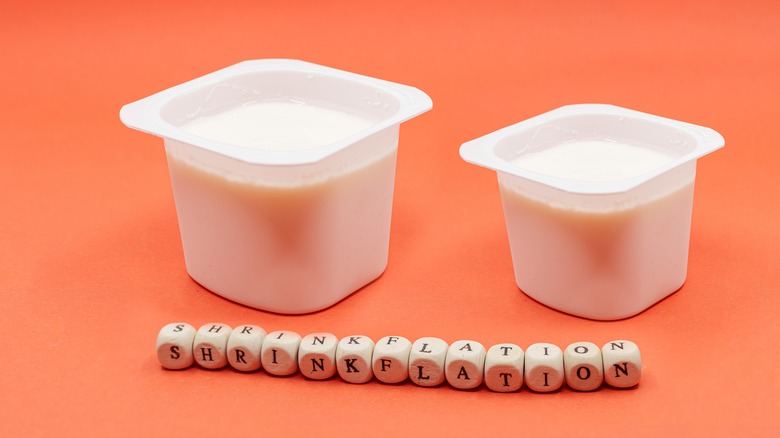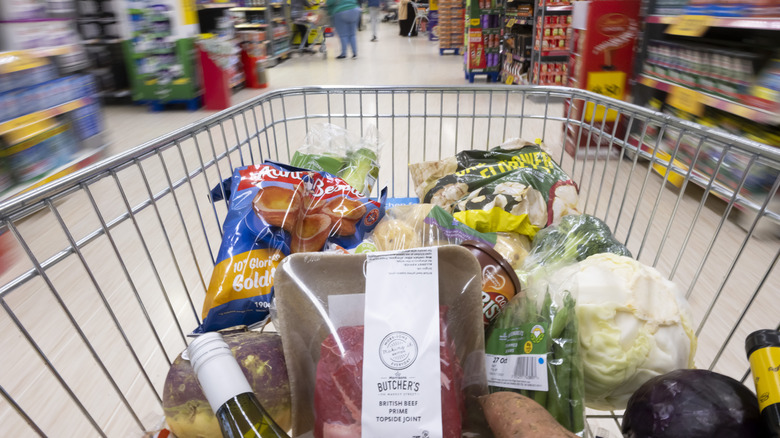What Is Shrinkflation?
Inflation, caused by the war in Ukraine, the ensuing threat to the world's food supply, and the oil embargo in a post-Covid economy (via Forbes), is making itself felt through a less known but prevalent concept called shrinkflation, according to Los Angeles Times. Recently, you may have stood in a supermarket looking at a packaged item thinking to yourself, "I am sure this used to be bigger." It is not your imagination, and neither are those higher food prices. This is the new status quo.
"Inflation is as violent as a mugger, as frightening as an armed robber, and as deadly as a hit man," said Ronald Reagan of this unsavory economic ailment in 1978, per Boston.com. The state and concerned entities like the United States Central bank manage currency and interest rates in an attempt to fight inflation, according to Investopedia. Meanwhile, retailers do their bit to soften the impact of inflation on their sales, and one of the ways they do this is through shrinkflation (Investopedia).
Understanding and fighting Shrinkflation
The term shrinkflation was first invented in 2009 by the British economist Pippa Malmgren, according to Corporate Finance Institute(CFI). The word came to be during a pertinent period to describe the far-reaching effects of the toxic financial products that tainted markets and brought the world economy to the brink of collapse (AKA the Great Recession), according to Investopedia.
Shrinkflation is but a product of inflation — imposed by service providers and retailers to keep their costs down. The concept can reduce quality or quantity, according to CFI. Translated to groceries, it could mean the reduction or substitution of one ingredient for another, as in the case of Smart Balance substituting vegetable oil with water (via Mouseprint) or the instance where Doritos shrank their bags by half an ounce while the price remained the same. Other brands like Gatorade, Hershey's, and Burger King have made similar cuts, according to Business Insider.
More than half of American consumers are aware of the trend, according to Morning Consult. Fortunately, there are ways to soften the impact of the sneaky exploit, according to Go Banking Rates, by checking the prices, buying house brands, and waiting for items to go on sale where possible.

